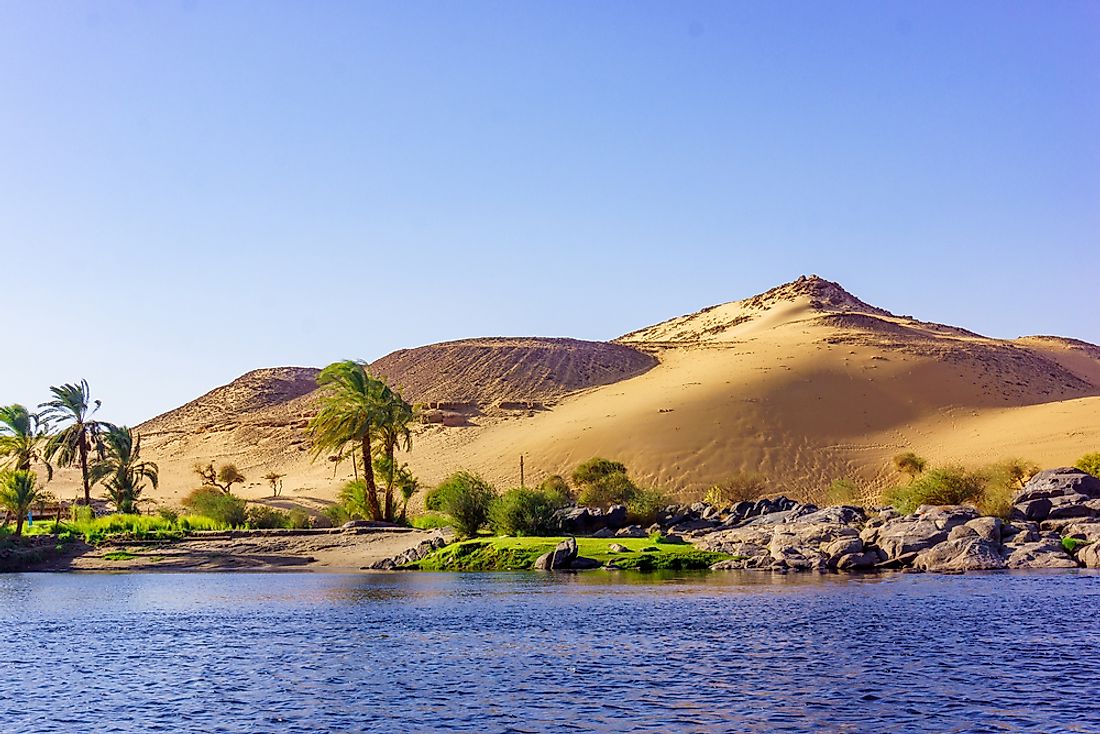The Longest Rivers in Egypt

Egypt is an African nation located on the northern side of the continent. The nation is blessed to have one of the richest histories in the world that go back all the way to between the sixth and fourth millennia BCE. The famous River Nile is the only river that flows in Egypt throughout the year. There are no tributaries to the river, seasonal or permanent, for the entirety of the length that it flows through Egypt.
The Nile River, The World's Longest River
The ancient Nile is a major river that is argued to be the longest in the world with an enormous length of about 4,258 miles. The drainage basin of the river covers a whopping eleven countries in Africa namely Kenya, Tanzania, Uganda, Burundi, Rwanda, the Democratic Republic of the Congo, Ethiopia, South Sudan, Eritrea, Egypt, and the Republic of Sudan. In the case of Sudan and Egypt, the river is the main source of water owing to the dryness of the two countries.
The river flows into Egypt from the northern region of Sudan into Lake Nubia or Lake Nasser in Egypt (the larger part is in Egypt). Afterward, the river enters the Aswan High dam and then goes out to continue its majestic march. The Nile passes through several regions such as Minya, Beni Suef, Asyut, Sohag, and Luxor, all the way to the Nile Delta in the northern side of Egypt before finally draining into the Mediterranean Sea.
When the Nile gets to the massive Nile Delta, it does not drain into the Mediterranean Sea as one. Instead, it splits into several smaller distributaries that eventually reach the sea. In the past, there were a total of seven distributaries. Today, only two of the seven remain, which has been mainly because of silting and schemes for flood relief. The five distributaries that are no longer flowing are the Pelusiac, the Tanitic, the Mendesian, the Sebennytic, and the Bolbitinic. The two extant rivers were known as the Phatnitic River and the Canopic River. Presently, the names of these two rivers have changed to the Damyat or the Damietta River and the Rashid or the Rosetta River respectively.
In the Eastern Desert, several dry tributaries or wadis meet the Nile. The wadis serve the purpose of draining the runoff from rainfall in the mountains that are located along the coast of the Egyptian Red Sea. Even when it rains, the runoff is rarely enough to reach the main flow of the Nile. There are three major wadis namely the Wadi Abbad (drainage area of about 2,700 square miles), the Wadi Shait (drainage area of about 3,861 square miles), and the Wadi El-Kharit (drainage area of about 8,880 square miles). Of the three wadis, the Wadi El-Kharit has the longest length of about 162 miles.
Further upriver, the Nile has two major distributaries which start in the region of Eastern and central Africa. These tributaries are the Blue Nile, which starts from Lake Tana in Ethiopia, and the White Nile, which starts in the Great Lakes region of Central and Eastern Africa.











